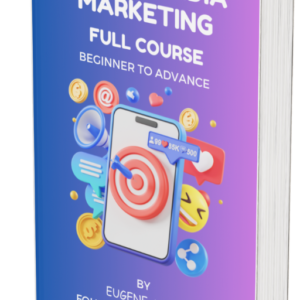In the ever-evolving landscape of digital advertising, where competition for user attention is fierce, mastering the art of keyword research is not just a skill—it’s a strategic imperative.
Effective Google Ads campaigns are built on the foundation of well-researched keywords, acting as the guiding force that connects your ads with the right audience and significantly improves relevance.
In this comprehensive guide, we will delve into the intricate world of keyword research strategies for Google Ads campaigns. Beyond merely understanding what users search for, successful advertisers recognize the nuanced dance between user intent, industry trends, and the ever-shifting digital landscape.
Why does keyword research matter? It is the compass that directs your campaigns toward success, ensuring that your message resonates with those actively seeking your products or services.
From the foundational basics to advanced strategies, we will explore how to navigate the complexities of keyword research, empowering you to optimize your Google Ads campaigns for maximum impact.
As we embark on this insightful journey, it is crucial to emphasize that keyword research is not a static process but a dynamic and ongoing one. Staying abreast of the latest trends, understanding user behavior, and refining your keyword strategy based on real-time data are essential components of a successful digital advertising campaign.
So, let’s dive into the world of keywords, uncover effective strategies, and elevate your Google Ads campaigns to new heights of success.
Understanding the Basics of Keyword Research for Google Ads
Keywords are the building blocks of digital advertising, serving as the bridge between what users search for and the content you provide. To embark on a journey of effective keyword research, it’s essential to grasp the fundamental concept of keywords and their pivotal role in online advertising.

Defining Keywords and Their Significance
Keywords, in the context of digital advertising, are the specific terms and phrases users type into search engines when looking for information, products, or services. These words form the basis of your ad targeting, determining when and where your ads will appear.
For instance, if you run a bakery specializing in custom cakes, keywords like “custom birthday cakes” or “wedding cake designs” become integral to reaching your target audience.
Aligning Keywords with Business Goals and Audience
Choosing the right keywords involves aligning them with your business goals and understanding your target audience. For example, if you operate an online pet store, your keywords might include not only product-centric terms like “dog food” or “cat toys” but also broader terms like “pet care tips” to attract users interested in relevant content.
The relationship between keywords and audience targeting is symbiotic. By selecting keywords that resonate with your ideal customers, you ensure that your ads are displayed to individuals actively seeking what you offer.
Understanding the basics of keyword research sets the stage for a more nuanced exploration of strategies that will enhance the effectiveness of your Google Ads campaigns.
As we proceed, we’ll delve into tools and techniques that will enable you to uncover the most relevant and impactful keywords for your specific business objectives.
Utilizing Google Keyword Planner

Once the foundation for understanding keywords is laid, the next step in your journey is harnessing the power of tools designed to make your keyword research journey more efficient and insightful.
Google Keyword Planner stands out as a comprehensive and indispensable tool in the arsenal of digital advertisers.
Google Keyword Planner is a feature-rich tool provided by Google Ads that empowers advertisers to discover, analyze, and refine their keyword strategies. It goes beyond mere keyword suggestions, offering valuable insights into search volume, competition, and estimated bid costs. Accessible from the Google Ads interface, the Keyword Planner is a go-to resource for both novice and experienced advertisers.
Step-by-Step Guide to Using the Tool
#1. Access the Keyword Planner: Log in to your Google Ads account, navigate to the “Tools & Settings” menu, and select “Keyword Planner.”
#2. Choose Your Goal: Whether you’re looking to find new keywords, get search volume data, or refine your campaign, the Keyword Planner accommodates different objectives.
#3. Enter your seed keywords: Start by entering a few seed keywords relevant to your business. For example, if you operate an online bookstore, your seed keywords might include “best-selling books” or “literary fiction.”
#4. Analyze Suggestions: The tool generates a list of keyword suggestions based on your input. Evaluate these suggestions, considering factors like search volume and relevance to your business.
#5. Refine and Expand: Use the provided filters to refine your keyword list based on metrics like average monthly searches, competition, and bid estimates. Additionally, explore related keywords to expand your reach.
Let’s say you’re managing a campaign for a travel agency specializing in adventure tours. Using Google Keyword Planner, you enter seed keywords like “adventure travel,” “trekking tours,” and “wildlife safaris.”
The tool generates additional suggestions, including terms like “mountain trekking holidays,” “safari packages,” and “extreme adventure vacations.” By analyzing metrics, you can prioritize keywords with high search volume and moderate competition, ensuring your campaign reaches a broad yet relevant audience.
The Google Keyword Planner serves as your compass, guiding you through the vast landscape of potential keywords and helping you make data-driven decisions for an optimized campaign.
Long-Tail Keywords: The Power of Specificity
While broad keywords cast a wide net, long-tail keywords bring a level of specificity that can be a game-changer for your Google Ads campaigns.
Understanding and leveraging the power of long-tail keywords is a strategy that often leads to higher conversion rates and more targeted audience engagement.
Long-tail keywords are more extended and specific phrases compared to their shorter, more generic counterparts. While a generic keyword like “running shoes” may attract a large audience, a long-tail equivalent like “women’s lightweight running shoes with arch support” targets a more specific and potentially interested segment of users.
The importance of long-tail keywords lies in their ability to capture user intent with precision. Users searching for long-tail terms often have a clearer idea of what they’re looking for, making them more likely to convert.
Consider a business that specializes in handmade artisanal soaps. While a broad keyword like “handmade soap” might attract a general audience, specific long-tail keywords like “organic lavender soap for sensitive skin” or “vegan citrus-scented soap bars” cater to users with distinct preferences.
By incorporating such long-tail gems into your campaign, you not only enhance relevance but also increase the likelihood of attracting customers genuinely interested in your unique offerings.
In the intricate dance of keyword selection, recognizing the power of specificity positions your ads to reach the right audience at the right moment.
How to Conduct Competitor Analysis for Keyword Insights
Understanding your competitors’ keyword strategies provides a wealth of insights that can inform and refine your approach. Competitor analysis tools, such as SEMrush or SpyFu, offer a window into the keywords that drive success in your industry.
Competitor analysis in the realm of keyword research involves identifying the keywords your competitors are targeting and understanding their overall approach to digital advertising.
This knowledge helps you uncover gaps in your own strategy, capitalize on successful tactics, and differentiate your campaigns.
Identifying Competitor Keywords
#1. Select Competitors: Identify your main competitors in the digital space. These are businesses targeting similar audiences or offering comparable products or services.
#2. Use Competitor Analysis Tools: Tools like SEMrush allow you to enter your competitor’s domain and unveil valuable insights, including the keywords they bid on, their ad copies, and even their ad spend.
#3. Analyze Keyword Overlap: Identify keywords that both you and your competitors are targeting. Pay attention to both shared and unique keywords to refine your strategy.
Imagine you operate an online furniture store and want to analyze the keyword strategy of a key competitor. SEMrush reveals that your competitor is targeting keywords like “modern living room furniture,” “affordable bedroom sets,” and “contemporary dining chairs.”
By uncovering these keywords, you gain valuable insights into your competitor’s focus areas and the terms they believe resonate with their audience.
Strategies for Leveraging Competitor Insights
#1. Identify Strengths and Weaknesses: Assess your competitor’s strengths and weaknesses based on the keywords they target. Look for opportunities where you can differentiate your offerings or improve upon their strategy.
#2. Discover Unique Keywords: Explore keywords that your competitors may not be targeting but are relevant to your business. This could open up new opportunities and untapped markets.
#3. Refine Ad Copy: Analyze the ad copies your competitors are using for specific keywords. Consider how you can create more compelling and differentiated ad copies to capture user attention.
Competitor analysis is not about copying strategies but about gaining a strategic advantage. By understanding your competitors’ keyword choices, you position yourself to make informed decisions that elevate your campaign’s effectiveness.
Negative Keywords: Enhancing Relevance and Cost Efficiency for Google Ads
In the intricate tapestry of keyword management, the concept of negative keywords emerges as a powerful tool for refining targeting, enhancing relevance, and optimizing cost efficiency.
Understanding the Concept of Negative Keywords
Negative keywords are terms that you explicitly exclude from your ad campaign. By doing so, you prevent your ads from being triggered by searches containing those specific terms.
For example, if you sell high-end watches, adding “cheap” as a negative keyword ensures your ads won’t appear for users searching for budget-friendly options.
How Negative Keywords Prevent Irrelevant Clicks
#1. Avoid Irrelevant Clicks: By identifying and adding negative keywords, you ensure that your ads are shown to users who are more likely to convert. For instance, excluding terms like “free” or “discount” can help filter out users seeking deals rather than premium products.
#2. Improve Ad Relevance: Negative keywords contribute to the relevance of your ads. Irrelevant clicks not only waste budget but also lead to a lower quality score. By refining your targeting, you enhance ad relevance and improve your overall campaign performance.
Consider a company that offers luxury spa retreats. While bidding on keywords like “luxury spa vacations” and “wellness getaways,” they may add negative keywords such as “budget spa deals” or “cheap spa packages.”
By doing so, they ensure their ads are not displayed to users seeking more economical options, aligning their campaign with users looking for high-end experiences.
Regular Monitoring and Adjustment
Regularly review search terms reports in your Google Ads account to identify new terms that may warrant negative keyword additions.
If certain keywords consistently lead to clicks but low conversions, consider adding them as negatives to optimize your budget and focus on more promising avenues.
The strategic use of negative keywords is a proactive measure that enhances the efficiency and effectiveness of your Google Ads campaigns.
How to Understand User Intent and Semantic Keywords
Understanding the intent behind user searches is fundamental to effective keyword selection. In this section, we’ll explore how aligning keywords with user intent and incorporating semantic keywords can elevate the relevance of your ads.
User intent refers to the underlying purpose or goal a user has when entering a search query. Recognizing and aligning with user intent allows you to tailor your ad messaging to meet the specific needs of your audience.
How Semantic Keywords Enhance Relevance
Semantic keywords are terms related in meaning to your main keywords. They provide additional context and help search engines understand the nuances of user queries. By incorporating semantic keywords, you expand the scope of your targeting while maintaining relevance.
Suppose you manage a blog that offers home improvement tips. If your primary keyword is “DIY home decor,” semantic keywords could include “interior design ideas,” “budget-friendly home projects,” or “creative home crafts.”
These terms not only capture a broader audience interested in home improvement but also provide search engines with a more comprehensive understanding of your content.
Strategies for Aligning with User Intent
#1. Review User Search Queries: Analyze the search queries that trigger your ads. Understand the intent behind these queries and adjust your keyword strategy accordingly.
#2. Tailor Ad Copy to Intent: Craft ad copies that directly address the user’s intent. If users are searching for product reviews, highlight the benefits and features in your ad copy.
User intent is the guiding force behind successful keyword selection. By anticipating what users are seeking, you position your ads to be more relevant and valuable in the eyes of your audience.
Seasonal and Trend-Based Keywords
In the ever-changing landscape of digital advertising, incorporating seasonal and trend-based keywords can provide timely relevance and capitalize on current consumer interests.
Different industries experience fluctuations in demand based on seasons, holidays, or specific events. Adjusting your keyword strategy to align with these fluctuations ensures that your ads remain relevant and impactful.
Trend-based keywords capture the essence of current popular topics, events, or cultural phenomena. Incorporating these keywords allows your campaigns to ride the wave of public interest and engagement.
Imagine you run an e-commerce store specializing in swimwear. As summer approaches, you might adjust your keyword strategy to include terms like “trendy swimsuits for summer,” “beachwear essentials,” or “vacation-ready swimwear.” These seasonal keywords align with the increased demand for swimwear during the warmer months.
Strategies for Effective Seasonal and Trend-Based Keyword Use
1. Create Seasonal Campaigns: Set up dedicated campaigns for specific seasons or events. For example, a clothing retailer might create a “Fall Fashion Collection” campaign, targeting keywords like “autumn wardrobe essentials” or “fall fashion trends.”
2. Monitor Industry Trends: Stay informed about trends in your industry or niche. Tools like Google Trends can help you identify rising search queries related to your products or services.
3. Adjust Bids and Budgets: During peak seasons or trending events, consider adjusting your bids and budgets to ensure your ads have the visibility needed to capitalize on increased demand.
By strategically integrating seasonal and trend-based keywords into your campaigns, you not only stay relevant to your audience but also demonstrate agility in responding to changing market dynamics.
Analyzing and Refining Keyword Performance

It is important to note that the journey doesn’t end with keyword selection—it extends into the continuous process of analyzing and refining your keyword performance.
Keyword performance is subject to change based on various factors, including market trends, user behavior, and competitor actions. Regularly monitoring and adapting your keyword strategy is essential for maintaining campaign effectiveness.
Using Google Ads Reports to Evaluate Keyword Performance
#1. Access Reports Section: In your Google Ads account, navigate to the “Reports” section to access detailed insights into your campaign performance.
#2. Review Search Terms Reports: Examine search terms reports to identify the actual queries users entered that triggered your ads. Identify high-performing keywords and those that may need adjustment.
#3. Analyze Key Metrics: Assess key metrics such as click-through rate (CTR), conversion rate, and return on ad spend (ROAS) for individual keywords. Identify trends and patterns that inform your optimization strategy.
Suppose you manage an e-commerce site selling fitness equipment. After reviewing your search terms report, you notice that the keyword “home workout equipment” consistently performs well, driving both clicks and conversions. On the other hand, the broader term “exercise gear” has a lower conversion rate. In response, you may allocate more budget to campaigns targeting the high-performing keyword and consider refining ad copy to better align with user intent.
Strategies for Refining Keyword Lists
#1. Pause Underperforming Keywords: If certain keywords consistently underperform or attract irrelevant traffic, consider pausing or adjusting bids for those terms.
#2. Explore New Opportunities: Continuously explore new keyword opportunities based on emerging trends, user behavior shifts, or changes in your product offerings.
#3. Adapt to Market Changes: Stay attuned to changes in the market, industry landscape, and user preferences. Adapt your keyword strategy to remain agile and responsive.
In the ever-evolving landscape of digital advertising, the power of effective keyword research lies not just in initial selection but in the ongoing process of analysis, adaptation, and refinement. By embracing this dynamic approach, you position your Google Ads campaigns for sustained success and relevance.
Conclusion
As we draw the curtains on our exploration of keyword research strategies for effective Google Ads campaigns, we must recognize that keywords are not static entities but dynamic components that require continuous attention and strategic adaptation.
From understanding the basics of keywords to leveraging advanced tools like Google Keyword Planner, delving into the world of long-tail gems, and harnessing the insights from competitor analysis, each step in the journey contributes to the precision and relevance of your campaigns.
The strategic use of negative keywords, alignment with user intent through semantic keywords, and the incorporation of seasonal and trend-based terms showcase the depth and breadth of a comprehensive keyword strategy.
Finally, the commitment to ongoing analysis and refinement ensures that your campaigns stay responsive to market dynamics and user behavior.
In the dynamic and competitive arena of digital advertising, the effectiveness of your Google Ads campaigns hinges on your mastery of keyword research.
As you navigate this ever-changing landscape, remember that keyword research is not just a task; it’s a dynamic and ongoing process that, when done thoughtfully, can propel your campaigns to new heights of success. Happy advertising!










